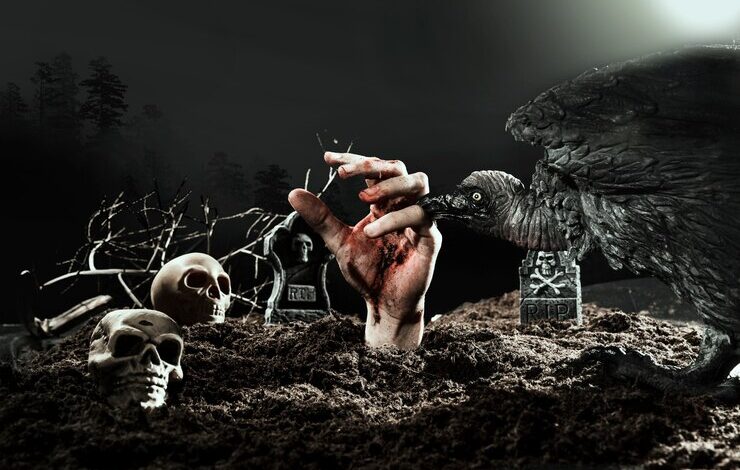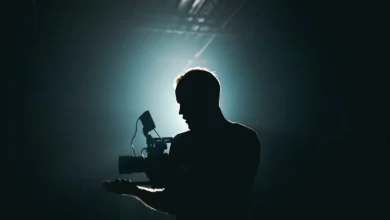the 1982 movie poltergeist used real skeletons as – tymoff

The film’s introduction to The poltergeist and the controversy surrounding it
Lights, camera, controversy! Explore the behind-the-scenes that made up the 1983 horror movie “Poltergeist” and uncover the shocking truth that real skeletons were featured in the film’s cult classic. Get into the fascinating details of the ways in which Hollywood blurred the lines between fact and fiction in order to bring this enthralling story to life. Prepare yourself for a trip through ethical controversies and historical revelations. You will also experience the long-lasting impact of a film that pushed the boundaries in more than one way.
An explanation of the use of real skeletons in the film
In the 1982 film Poltergeist in the 1982 film Poltergeist, real skeletons were utilized in a terrifying demonstration of realness. The film’s makers opted to use real human remains to give an impression of authenticity in specific scenes. Skeletons added a spooky effect that props made of traditional materials couldn’t compete with. A few believe this was the reason for contributing to the film’s disturbing mood and long-lasting impact on the audience.
Utilizing real skeletons triggered ethical concerns in the business and with viewers. There were questions concerning respecting the dead and the necessity of it to honor art. However, despite these concerns the decision to use original bones was taken for artistic reasons, and pushing the boundaries in the horror filmmaking.
Although it’s some may find it controversial Poltergeist does not stand alone when it comes to using real skeletons in its films throughout the history of cinema. Others have also used human remains for narratives, triggering debates about ethical considerations and innovative choices in filmmaking.
The ethical concerns that surround using real human skeletons as props in films
The inclusion of real skeletons in films raises ethical issues that remain for a long time after the credits have ended. The blurring of lines between the real and fiction and leaves viewers confused about the reality they see on the screen. The notion that real human remains were a in the making of a film may cause discomfort and a feeling of discontent for viewers.
Ethics concerns arise from whether a proper approval was received from families of the deceased to use their remains within a cinematic context. Respect for the dead must always be the first priority even in the world of entertainment. The use of real skeletons could be viewed as exploitation of human tragedy to make a profit gain and provoking debates on how to define the line between morality and art.
With the advancement of technology and technology improves, there are options that are more realistic for creating real-looking visual effects without resorting using with bone. Filmmakers are required to look at these alternatives and consider ethical considerations when depicting life after death on the screen.
There are other instances of real skeletons being utilized in film throughout the ages
In the past, throughout the history of cinema There have been many instances of real skeletons being utilized in films, providing an unsettling authenticity to certain scenes. In the film “The Good, the Bad and the Ugly,” director Sergio Leone famously included real bones in a graveyard scene to provide an added sense of realism. In the 1973 film “The Legend of Hell House,” real human bones were used to enhance the macabre atmosphere in the haunted location.
In more recent times, blockbuster franchises such as “Pirates of the Caribbean” included real human skeletons as props in their eerie pirate ships. The appeal of with real human skeletons is rooted in the need to convey a feeling of true dread and mystery on the screen.
Despite the debates over ethics concerning this method however, it is still used sparingly in films that require an additional level of realism that is chilling.
The effect on the crew and cast of the phenomenon of poltergeist
The inclusion of real skulls in the 1982 film Poltergeist was a major influence on the crew and cast who were involved in the film’s production. Think about working on a set for a film only to find that the things you thought were props actually human remains. This must create an unsettling and unsettling mood when filming, increasing tensions and adding a layer of intrigue to an already challenging project.
For the actors, knowing they were actually working with bones could be a source of anxiety in their performance, blurring boundaries between reality and fiction. It’s difficult to imagine what it must be been for them to be interacting with these bizarre objects as they efforts to create convincing performances.
In the case of the crew members in charge of taking care of the skeletons, it probably was a major burden on their consciences. The ethical ramifications for together actual human remains for a movie cannot be overstated. It raises questions regarding respect for the deceased and the proper boundaries for filmmaking.
The cultural legacy and impact of the film, despite the controversial methods of production
Despite the controversy that surrounds the film’s creation, “Poltergeist” has left an imprint on the realm of horror film. The film’s eerie atmosphere, creative special effects and unforgettable performances have established its status as a classic within the genre.
People were fascinated by the haunting story of a family that is haunted by spirits of evil, with many still believing it to be among the most frightening films ever created. The memorable scenes like Carol Anne’s famous phrase “They’re here” continue to cause a shiver down viewers’ spines for decades after the film’s release.
“Poltergeist” also influenced numerous filmmakers who took inspiration from its innovative techniques and story telling. The impact of the film can be seen in current horror films, which strive to create the same sense of terror and suspense that made the film memorable.
Despite its controversial past, “Poltergeist” remains a iconic cultural icon that continues to amuse and scare audiences across the globe.
Conclusion: Reflection on the real-skeletons used in movies and possible changes to
In examining the real skeletons used in movies, it’s clear that the debate surrounding the use of skeletons raises ethical issues. In 1982, the film Poltergeist made use of real skeletons leading to debates over respect for human remains as well as the treatment of the actors as well as crew members as well as highlighting an unsavory aspect of the history of Hollywood.
As we progress in the world of film there is an increasing awareness of ethical standards and ethics which guide the production of movies. The actual skeletons used in films has become less frequent due to the evolution of guidelines and an increased awareness of the cultural norms and beliefs. They serve as a reminder of how advances can be made when paying attention to both the living as well as the dead in filmmaking endeavors.
Legacy of Poltergeist will always be interwoven with its controversial production techniques using real Skeletons. Despite the dark shadow that hangs over its production it continues to impress viewers with its shivering plot and innovative special effects. It’s an affirmation of that power of story telling, while making us think about the way we’ve come in the past in terms of both ethically and artistically in shaping our entertainment industry towards an environmentally conscious future.



